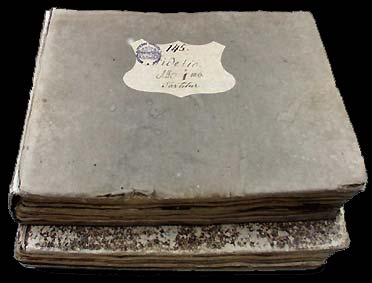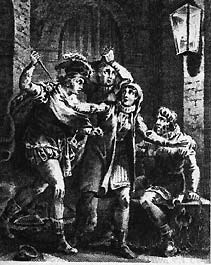| |
|
 |
|
|
The composer was not, however, satisfied with this overture - the contrasts were not sufficiently indicated. It was judged by the critics as «too simple and too far from the theme of the work». It was very rich music, bursting with energy and originality. The overture begins with a sombre chord and a long, slow introduction. But we don't find, as in the two following overtures, the tragic descent into Florestan's dungeon. An impressive crecendo drives and accelerates without ceasing, towards the principal theme. Florestan's theme therefore enters in the guise of a development, following the reprise of the allegro. Also note, at the beginning of the coda, a crecendo on the principal theme, which was no doubt to later influence Rossini. The Second Overture, written immediately afterwards and published, like the opera, under the number opus 72, marks the arrival of new conceptions. It corresponds exactly with the rolling of action. Situated in the development, the culminating points of dramatic evolution reflect exactly the souls of the two principal characters, and exault in the coda, after which the trumpet call introduces the radiant and heroic characters in the Florestan theme. The reprise was a failure because, in respecting the theme of the opera, there was no question of going back to the ambience of the exposition. Wagner really liked this overture, but it wasn't appreciated by the public at the time.
Without the reprise, the sections are elongated:
the introduction is marked with impressive contrasts
and particularly long silences. And in the development,
the form takes on the complexity comment to
the great works of this Master. When Beethoven reshuffled this work which became opus 72 b, re-established equality of form. This magnificent work became a melodic and poetic variation of the previous. We now find, after the trumpet call, a reprise
of the allegro, which debarks like an irrepresible
surge towards the gaiety of the presto. Without
a doubt one of the composer's most beautiful
works. More must be said of the principal theme of
the exposition, where the melody is played 'piano',
and simply by the violins and cellos, but with
an extraordinary force - «strong like the 'piano'
of Leonore 3», as once said a great conductor. Mendelssohn introduced this overture in the
second act of the opera. This practise has been
conserved right up until today. Much later in 1814, on the occasion of the reshuffling of the complete opera, Beethoven re-wrote the overture of « Fidelio ». Napoleon beaten, Paris occupied by the allies of the Emperor, Fidelio seemed to be a symbol of a victorious fight over tyrranny: the patriotic euphoria of Vienna explosed in this definitive overture, which took not a single theme from the opera but which left the public with the happy question of drama. The calls of the wind section, much re-inforced in this version, convinced the crowds of a festival of liberty. This announced the finale of the 9th symphony.
|
|
||||||||||||||||
 The
overture Leonore n°1, published under
the number opus 138, but written in 1804, would,
without doubt, have been the one which opened
the first performance of the opera. As was practised
at the time, the overture would set the mode
of the work which was to follow. However Beethoven
placed, between the exposition of the theme
and the reprise, a short adagio, in the place
of the development, which picked up the famous
theme of Florestan in his dungeon. This theme
is common to three of the Leonore overtures.
The
overture Leonore n°1, published under
the number opus 138, but written in 1804, would,
without doubt, have been the one which opened
the first performance of the opera. As was practised
at the time, the overture would set the mode
of the work which was to follow. However Beethoven
placed, between the exposition of the theme
and the reprise, a short adagio, in the place
of the development, which picked up the famous
theme of Florestan in his dungeon. This theme
is common to three of the Leonore overtures. To
appreciate this music, one has to ignore the
overture number 3.
The musical material is identical, but the number
2 is overall a dramatic masterpiece, an opera
without words and, if compared, can seem like
a draft for the number 3.
To
appreciate this music, one has to ignore the
overture number 3.
The musical material is identical, but the number
2 is overall a dramatic masterpiece, an opera
without words and, if compared, can seem like
a draft for the number 3.